10 Wild Teas Every Survivalist Should Know

Make sure to like Living Green and Frugally on Facebook, Shop at Amazon to help support my site and explore our PINTEREST BOARDS for innovative ways you can become self-sufficient.
Foraging for wild teas isn’t just a fun activity—it’s a survival skill. Learning to identify plants for brewing wild teas is a valuable skill for any outdoor enthusiast or survivalist. Not only do wild teas provide hydration, but many of them also offer medicinal benefits, from boosting immunity to calming nerves.
In this guide, we’ll explore 10 wild teas you can forage and brew, each with unique flavors and benefits.
1. Pine Needle Tea
Benefits: Pine needle tea is high in vitamin C, making it a great immune booster, especially in winter. Its subtle pine flavor is refreshing and slightly citrusy.
Recipe:
- Gather a handful of young pine needles (avoid older, brown needles).
- Rinse them to remove dirt and insects.
- Boil water, remove from heat, then steep the needles for 10-15 minutes.
- Strain and enjoy!
Tip: Avoid using needles from yew trees, as they’re toxic. Always double-check your identification.
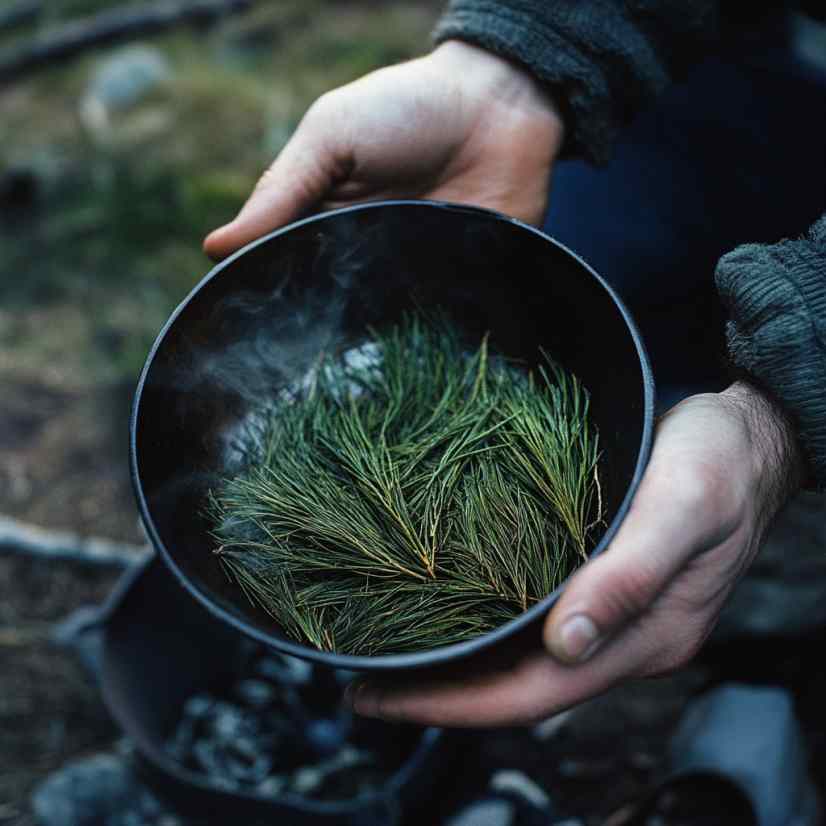
2. Dandelion Tea
Benefits: Known for aiding digestion and detoxifying the liver, dandelion tea has a slightly bitter, earthy taste.
Recipe:
- Collect dandelion flowers or roots (roots are best for tea in fall or winter).
- Rinse well, then steep in hot water for 10 minutes.
- Sweeten with honey if desired.
Tip: Avoid picking dandelions in areas treated with pesticides or chemicals.

3. Wild Raspberry Leaf Tea
Benefits: Raspberry leaves can ease digestive issues and support women’s reproductive health.
Recipe:
- Pick fresh, green raspberry leaves, rinse, and pat dry.
- Steep in boiling water for 5-10 minutes.
- Strain and serve.
Tip: Only pick young leaves, as older leaves can be too tough and may taste bitter.

4. Stinging Nettle Tea
Benefits: Nettle is rich in vitamins and minerals, making it a nutritious and medicinal tea.
Recipe:
- Carefully pick young nettle leaves (use gloves!).
- Rinse and steep in hot water for 5-7 minutes.
- Strain before drinking.
Tip: Once steeped, nettles lose their sting and become safe to consume.
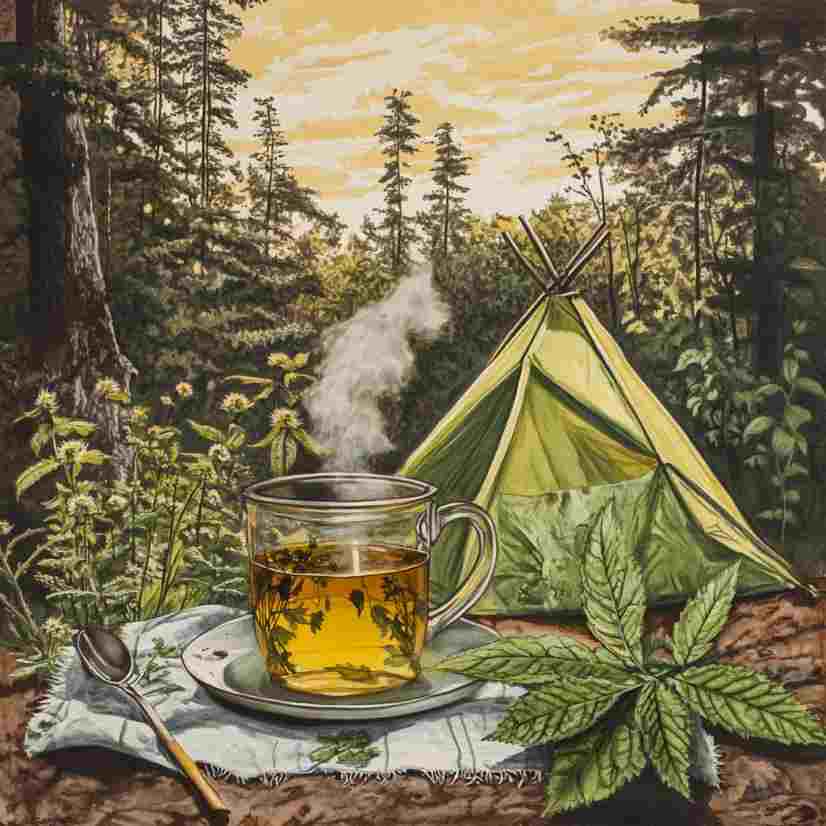
5. Clover Tea
Benefits: Clover is high in antioxidants and is often used to support heart health and women’s health.
Recipe:
- Pick clover flowers and rinse them well.
- Steep in hot water for 10 minutes.
- Sweeten with honey for a smoother taste.
Tip: White and red clovers are both safe, but avoid yellow sweet clover, which can cause health issues.
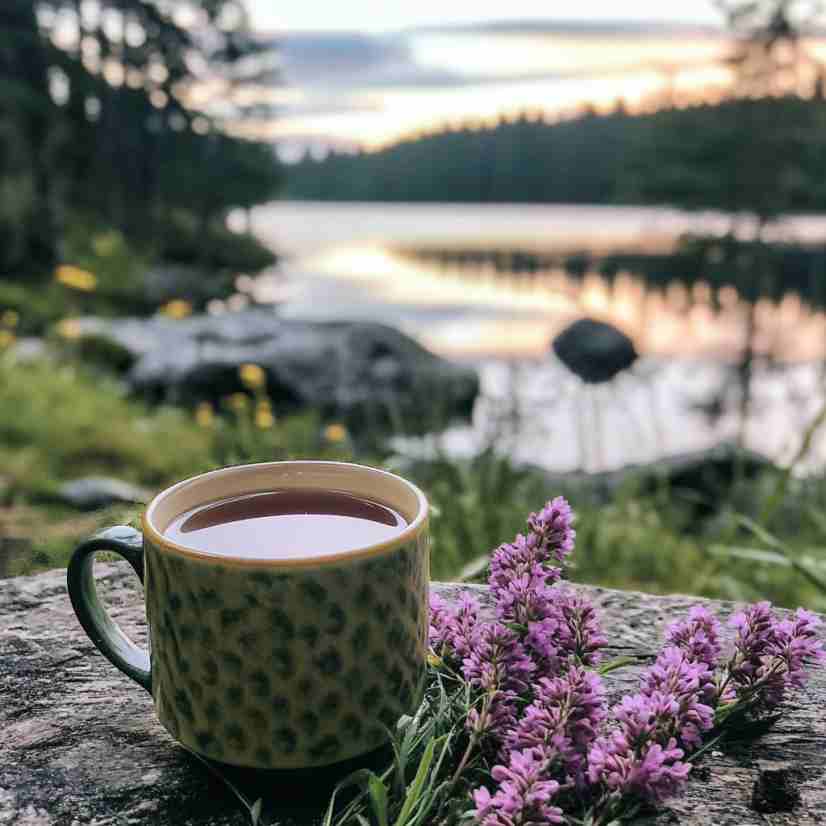
6. Mint Tea (Wild Mint)
Benefits: Mint is known for soothing the stomach and relieving nausea.
Recipe:
- Gather fresh mint leaves.
- Rinse and steep in hot water for 5-10 minutes.
- Sweeten if desired.
Tip: Look for mint near water sources, as it often grows along riverbanks.
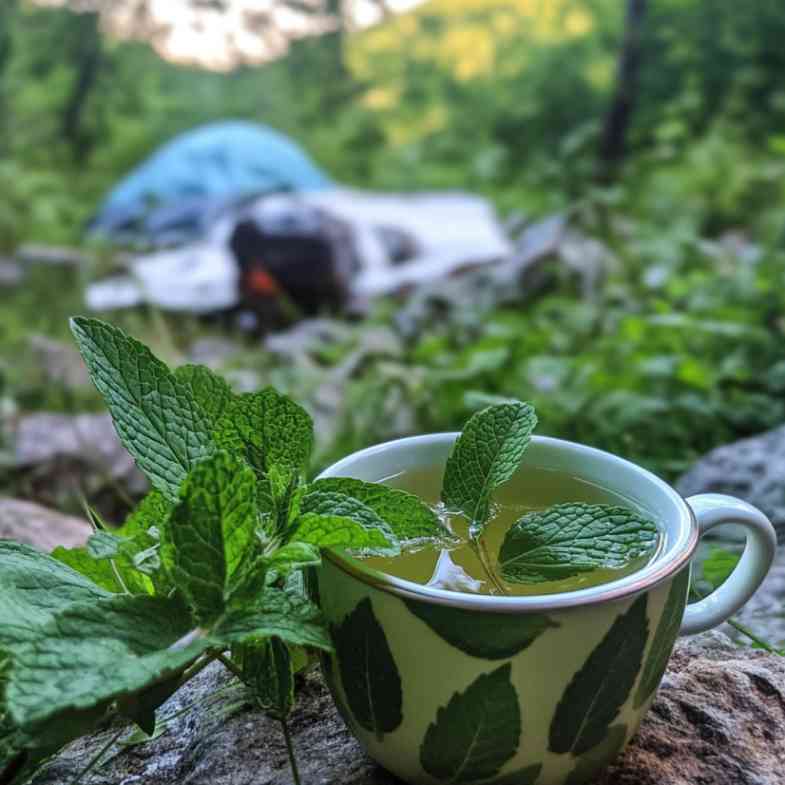
7. Yarrow Tea
Benefits: Yarrow is known for its antiseptic and anti-inflammatory properties.
Recipe:
- Collect yarrow leaves and flowers.
- Rinse and steep in boiling water for 10 minutes.
- Strain and drink.
Tip: Yarrow has a strong, bitter taste, so it’s often paired with honey or another sweetener.

8. Chamomile Tea (Wild Chamomile)
Benefits: Chamomile can help with relaxation and sleep, making it ideal for unwinding after a long day.
Recipe:
- Harvest fresh chamomile flowers, rinse thoroughly.
- Steep in hot water for 5 minutes.
- Strain and enjoy.
Tip: Chamomile is a mild tea but has a strong aroma, so a small amount goes a long way.
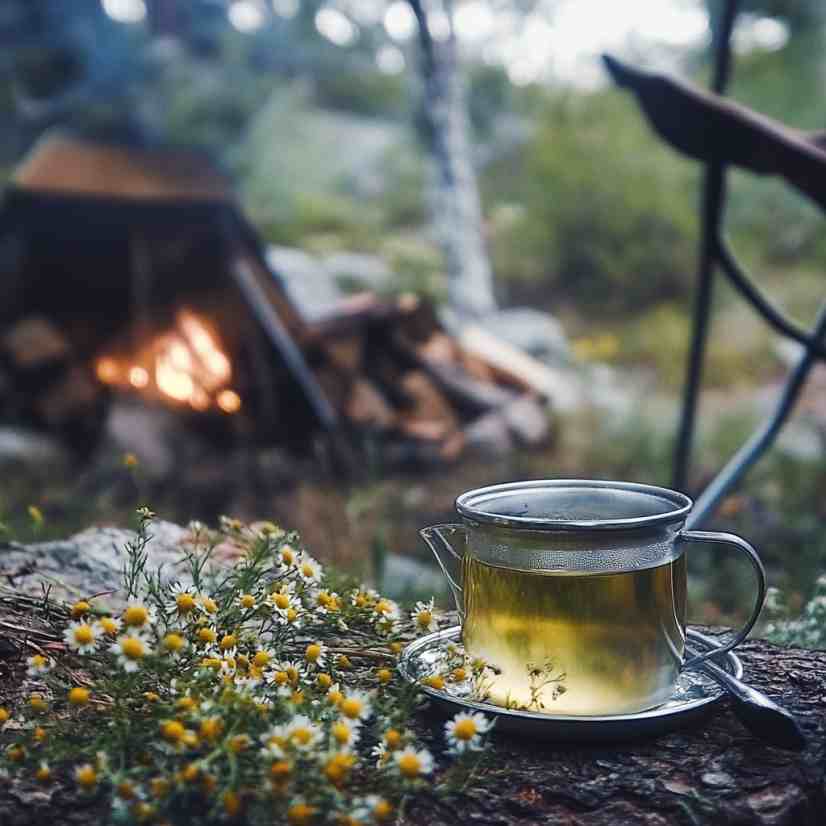
9. Burdock Root Tea
Benefits: Burdock is packed with antioxidants and can aid in detoxifying the body.
Recipe:
- Harvest burdock root, clean, and slice thinly.
- Boil the slices in water for 10 minutes.
- Strain and drink warm.
Tip: Burdock roots are best harvested in fall for a richer, earthier flavor.

10. Rose Hip Tea
Benefits: Rose hips are high in vitamin C and can help boost immunity.
Recipe:
- Collect fresh or dried rose hips.
- Steep in hot water for 10-15 minutes.
- Strain and enjoy the tangy, fruity flavor.
Tip: Harvest rose hips after the first frost for a sweeter taste.

Tips for Foraging Wild Teas Safely
- Identify with Certainty: Never consume a plant if you’re not 100% sure of its identity.
- Avoid Polluted Areas: Steer clear of plants near roadsides or treated with pesticides.
- Start Small: Some wild plants can cause allergic reactions; try a small amount first.
- Respect Nature: Take only what you need and avoid uprooting plants to ensure they can regrow.
Common Questions About Wild Teas
Q: Can I dry wild plants for tea to use later?
A: Absolutely! Drying wild plants allows you to store and use them for months. Hang them in a dark, airy place until fully dry, then store in airtight containers.
Q: Is there a risk of toxicity with wild teas?
A: Yes, some wild plants are toxic. Always be cautious and consult reputable sources or a foraging guide for identification. Avoid plants like yew, which is toxic when consumed.
Q: Can I mix wild teas with store-bought teas?
A: Yes, mixing wild and store-bought teas can create unique flavors. For example, combining mint or raspberry leaves with green or black tea adds depth and additional health benefits.
Q: What should I do if I feel sick after drinking a wild tea?
A: Discontinue use immediately. Even safe plants can cause allergies or sensitivities in some people. If symptoms persist, seek medical attention.
Q: Are wild teas safe for children?
A: Many wild teas are safe, but always research specific plants and consult a healthcare professional before giving wild tea to children. Stick to milder options like chamomile or mint.
Conclusion
Brewing wild teas brings you closer to nature and equips you with survival skills. Whether you’re looking for a warming cup of pine needle tea or a soothing dandelion brew, these teas offer a range of flavors and benefits. With knowledge and respect for the plants around you, wild tea-making can be both a hobby and a lifesaving skill in the wilderness.